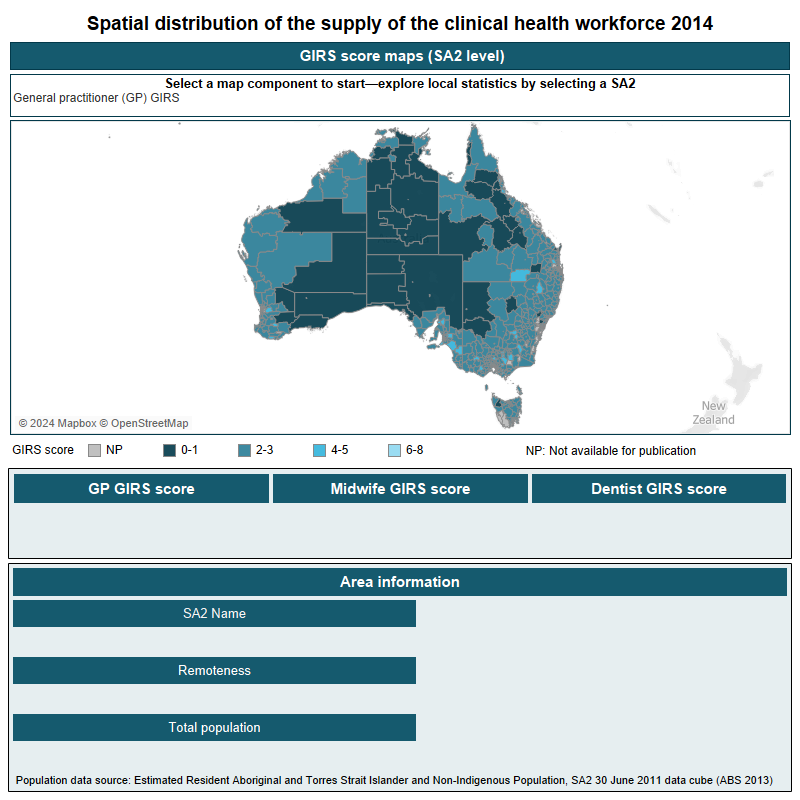GIRS score maps
The Geographically-adjusted Index of Relative Supply (GIRS) is a measure developed by the AIHW to compare health workforce supply across small geographic areas. The GIRS takes the known workforce supply based in area and adjusts it for three other factors – land size, population dispersion, and the proximity of the population to the relevant service locations.
The GIRS score ranges from 0 to 8 for each geographic area, and can vary for different professions. Areas with lower GIRS scores are more likely to face workforce supply challenges than those with higher GIRS scores.
When compared with the distribution of the Indigenous population, the GIRS score can assess the extent to which Indigenous people live in areas with lower relative levels of workforce supply.
Interactive GIRS score maps of Australia are presented for GPs, dentists and midwives.

The GIRS is indicative of potential workforce supply challenges in each of the Statistical Area Level 2s (SA2s) in Australia. Several cautions must be noted. The workforce supply data are self-reports, refer to 2014, and include only those who responded to the survey component of the 2014 National Health Workforce Data Set (NHWDS). If a provider worked at more than one location, all of his/her hours were included, but attributed to the primary location only. Thus, if some of those hours were delivered outside the SA2 (such as through outreach clinics), the GIRS will underestimate workforce supply outside the primary practice SA2. The GIRS is also not a measure of the adequacy of services, whether services are financially or culturally accessible, nor of the extent to which they meet the needs of the population in each area.
For more information, see Chapter 6.9 ‘Supply of the health workforce for the Indigenous population’ and supplementary document S6.9 ‘Estimating the supply of the health workforce’.


